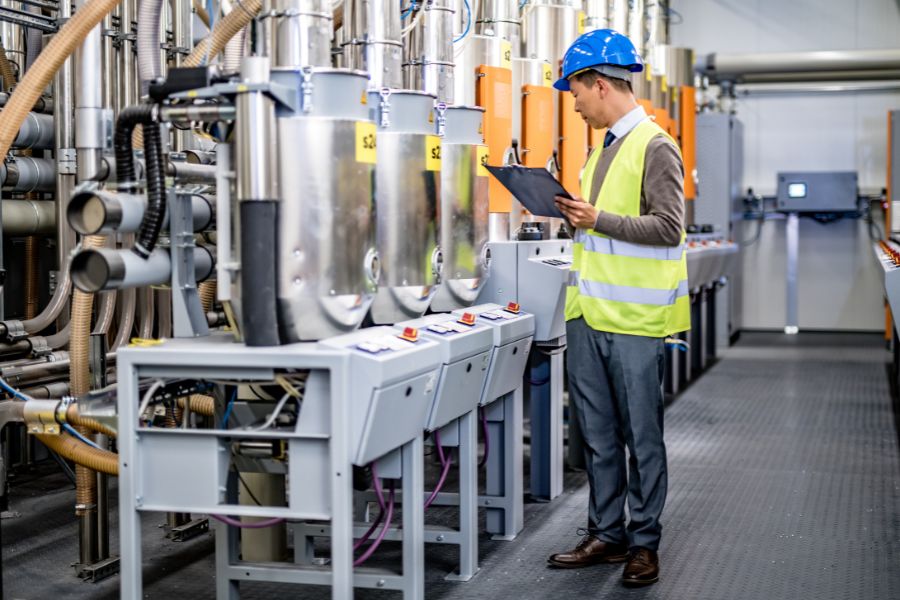Manufacturing & Light Industry Recruitment: Finding the Right Fit for the Job

Finding the right people for the right jobs is important in every industry, but when it comes to manufacturing and light industry, it’s even more critical. These industries rely on people to keep things moving—whether it’s assembling parts on a factory floor, checking product quality, packing goods for delivery, or running machines. Without dependable and skilled workers, the whole system can slow down or stop.
But recruiting in this space can be challenging. The work is often hands-on, fast-paced, and physically demanding. Many roles require specific skills, certifications, or experience. At the same time, companies often need to fill positions quickly to meet production deadlines. So how can employers find the right fit—not just someone who can do the job today, but someone who’s a great long-term team member?
Let’s take a closer look.
Step 1: Know What You’re Looking For
It all starts with understanding the job itself. That might sound obvious, but it’s often overlooked. Before posting a job ad or reaching out to candidates, it’s important to know exactly what the role requires. What kind of work will the person be doing? What skills or certifications are needed? Will they be standing for long hours, working in shifts, or using machines?
Getting clear about the day-to-day responsibilities helps you write better job descriptions and attract people who are a good fit. It also means you’re more likely to find someone who will stick around, because there won’t be any surprises once they start.
Step 2: Focus on Both Skills and Attitude
In manufacturing and light industry, technical skills matter. A forklift operator needs to know how to safely drive and load materials. A machine operator needs to understand how the equipment works. But just as important are qualities like reliability, teamwork, and a willingness to learn.
A candidate who shows up on time, works well with others, and takes pride in doing a good job can often be trained in the specific skills they need. That’s why many employers say attitude is just as important as experience—sometimes even more so.
Step 3: Work with People Who Know the Industry
Recruiting isn’t something you have to do alone. There are staffing agencies and recruiters who specialize in manufacturing and light industry, and they can make a big difference. These professionals understand what makes a good candidate in this field. They know how to screen for both hard and soft skills, and they often have access to a pool of qualified workers who are ready to start.
Working with an industry-savvy recruiter can save time, reduce turnover, and help you avoid costly hiring mistakes. They also understand local job markets—things like what wages are competitive, how to attract talent, and what job seekers in your area are really looking for.
Step 4: Use Technology to Your Advantage
Technology has made recruiting faster and more efficient. There are now online platforms where you can post jobs, search resumes, and even match with candidates automatically based on your needs. Some companies use video interviews or virtual assessments to get to know candidates before bringing them in.
Applicant tracking systems (ATS) can help manage large numbers of applications, so you don’t miss out on great candidates. And skills testing tools can help you see whether someone really has the experience they claim on their resume.
Just remember: while technology is helpful, it shouldn’t replace human interaction. A quick call or friendly interview can give you valuable insight into a person’s character and communication style—things you can’t always see on paper.
Step 5: Be Honest and Clear
Hiring is just the beginning. If you want people to stay and grow with your company, it’s important to be honest about the job from the start. Let candidates know what the work environment is like. Is it noisy or physically demanding? Are there opportunities to move up or learn new skills?
Being upfront about the challenges as well as the benefits helps you attract people who are truly ready for the job—and that reduces turnover.
Also, think about what you offer beyond the paycheck. Do you provide training? Shift flexibility? A positive team environment? These things can set your company apart and help you compete for top talent.
Step 6: Think Long-Term
Finally, it’s important to think beyond the short-term need to fill a spot on the line. Every new hire is an opportunity to build a stronger, more reliable team. Taking the time to find the right person pays off in the long run with better productivity, fewer mistakes, and a more positive workplace culture.
Encouraging employee growth—through training, promotions, or simply recognizing good work—helps you keep the people you worked so hard to find.
Final Thoughts
Recruiting for manufacturing and light industry roles takes a thoughtful approach. It’s not just about filling a position quickly—it’s about finding someone who fits the role, the team, and the company. By understanding your needs, using the right tools, and focusing on both skills and attitude, you can build a strong workforce that helps your business thrive.
The right fit isn’t just someone who can do the job. It’s someone who wants to be there—and that makes all the difference.














